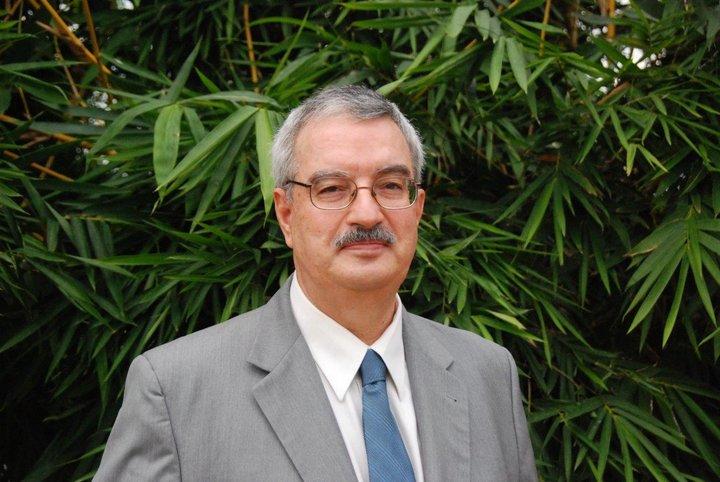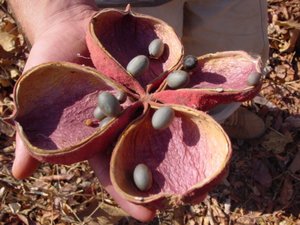Why agricultural biodiversity must be embedded into sustainable development policies

On the International Day for Biological Diversity, M. Ann Tutwiler hands over her blog to special guest Braulio Ferreira de Souza Dias, Executive Secretary, Convention on Biological Diversity.
On the 2015 International Day for Biological Diversity – with a theme of Biodiversity for Sustainable Development, M. Ann Tutwiler hands over her blog to special guest Braulio Ferreira de Souza Dias, Executive Secretary, Convention on Biological Diversity. He explains why using agricultural biodiversity is essential to meet the sustainable development goals, why science should matter to policymakers and how in Brazil, his home country, strong political will is putting biodiversity back on the menu for improved food and nutrition security.
Braulio Ferreira de Souza Dias
Today is the 2015 International Day for Biological Diversity with a theme of biodiversity for sustainable development.
In September, the global community will decide the post-2015 sustainable development agenda, setting out the framework that will align global investments in social, economic and environmental development over the next 15 years. Never has the need to get these decisions right been so critical. Global challenges such as malnutrition, poverty, climate change and environmental degradation need to be met on a planet that is experiencing the rapid depletion of resources coupled with increasing population pressures.
A case in point is biodiversity loss. But while most efforts are directed at halting biodiversity loss using traditional conservation approaches, what is often overlooked is the potential use of biodiversity to help meet a number of sustainable development goals, especially those linked to our food systems. But for this to happen, biodiversity for food and nutrition needs to be embedded into national policies as well as global agendas.
As the Executive Secretary of the Convention on Biological Diversity, this is a topic close to my heart. I started out as a biologist but quickly became very frustrated on realizing the disconnect that exists between science and the formulation of public policies. So I moved into policy bringing along a strong personal mandate to advocate for the use of science as the basis for informed policy decision-making. An area where this is beginning to pay off is the use of biodiversity to improve food and nutrition security, as is happening in my home country, Brazil.
Brazil is part of the 'Biodiversity for Food and Nutrition Initiative' (BFN), which arose from the cross-cutting initiative of the Convention on Biological Diversity, with support from the Global Environment Facility and the United Nations Environment Programme. The Initiative is led by four countries, the others being Kenya, Sri Lanka and Turkey. It is coordinated by Bioversity International with whom we have worked closely for many years.
Brazil has high rates of malnutrition – for example, 1 in 3 children aged between 5 and 9 are overweight. It is one of the world’s hotspots for biodiversity, much of which is edible and nutritious, but many of these traditional species have fallen off household menus and out of consumer shopping baskets in favour of a narrow range of energy-dense staple crops.
The Government of Brazil has given the BFN initiative full support, agreeing to use information generated by the project on nutrition-rich species to inform their food and nutrition security policies. A crucial gap in the knowledge base was the scientific information on the nutritional content of promising native food species, so now the nutritional content of more than 100 underutilized native food species is being investigated.
 One of main drivers of biodiversity loss in the context of biodiversity for food and nutrition is a lack of appreciation of its value by both producers and consumers. In Brazil, as in the other countries of the initiative, efforts are being made to raise awareness of its importance and to improve market links to ensure its uptake. The Government in Brazil has established a school feeding programme to promote healthy eating education, reconnecting nature with food for school children who are part of the programme. Investing in education is critical as these children are the future food producers, consumers and protectors of biodiversity.
One of main drivers of biodiversity loss in the context of biodiversity for food and nutrition is a lack of appreciation of its value by both producers and consumers. In Brazil, as in the other countries of the initiative, efforts are being made to raise awareness of its importance and to improve market links to ensure its uptake. The Government in Brazil has established a school feeding programme to promote healthy eating education, reconnecting nature with food for school children who are part of the programme. Investing in education is critical as these children are the future food producers, consumers and protectors of biodiversity.
The programme has an added critical food procurement component which ensures that 30% of produce is bought from small-scale producers. This is resulting in the empowerment of producers not only through this income stream, which also pays a premium of 30% on sustainably produced local foods, but through the creation of cooperatives which often include marginalized producers, such as indigenous communities. It also encourages diversified production on the farm which in turn increases resilience, for example to extreme weather events such as drought which can destroy an entire harvest of a single crop. At the moment the diversity count is low in terms of species being purchased through the programme but this also means there is a great opportunity to monitor how increasing the diversity produced, purchased and consumed will in the longer-term improve nutrition and affect the livelihoods of the small-scale producers involved.
All the countries involved in the Initiative will be using the occasion of the International Day for Biological Diversity to raise awareness of the importance of biodiversity for food and nutrition. For example, in Sri Lanka today, His Excellency Hon. Maithripala Sirisena President of the Democratic Socialist Republic, is inaugurating the opening of a traditional food market outlet with the Ministry of the Environment.
Before I close on this special day, I would like to draw your attention to a new book which we have produced with the World Health Organization, 'Connecting Global Priorities: Biodiversity and human health'. We worked with many partners, including Bioversity International who contributed to two chapters, to bring together the current evidence base on the links between human health, nutrition and environmental sustainability. The book is a valuable resource, not just to inform the recent shift towards agriculture that is more nutrition-sensitive, but also to identify knowledge gaps to identify future areas of work.
We are at the beginning of a long journey, but I see many opportunities to help shape the sustainable development dialogue to be more biodiversity-sensitive, if we can enhance the science base and get scientists and policymakers to talk.
Happy International Day for Biological Diversity
Braulio Ferreira de Souza Dias, Executive Secretary, Convention on Biological Diversity
The GEF 'Mainstreaming biodiversity for nutrition and health' initiative is led by Brazil, Kenya, Sri Lanka and Turkey and coordinated by Bioversity International, with implementation support from the United Nations Environment Programme (UNEP) and the Food and Agriculture Organization of the United Nations (FAO) and additional support from the CGIAR Research Program on Agriculture for Nutrition and Health.
Photos:
- Braulio Ferreira de Souza Dias. Credit: Convention on Biological Diversity
- Sterculia, also known as tropical chestnut, Brazil. Credit: F.Tatagiba
